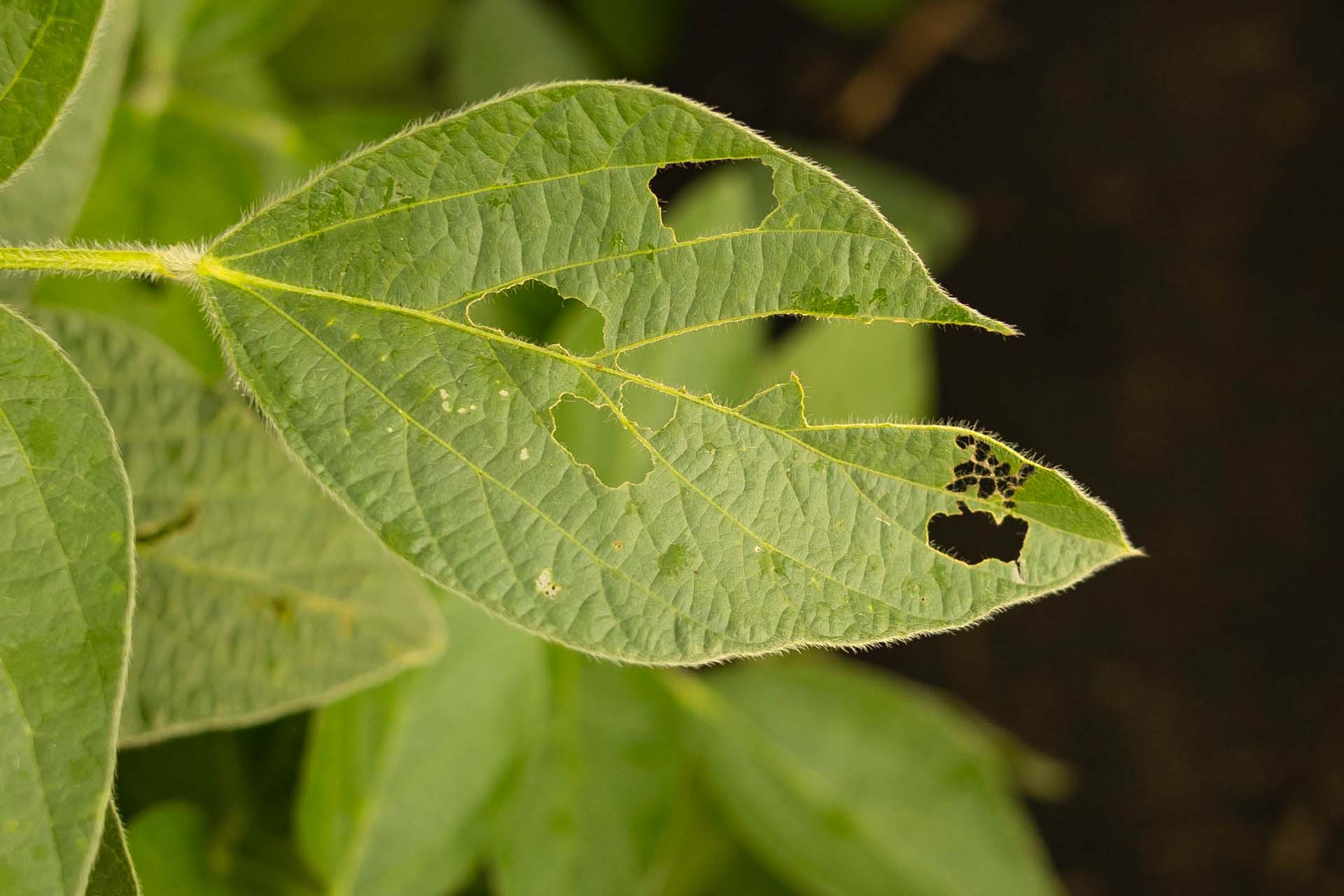
(Photo: Iowa Soybean Association / Joclyn Bushman)
Research improving productivity and profitability
April 29, 2025 | Kriss Nelson
North Central Soybean Research Program
Concentration, collaboration, communication and coordination. It’s through these four Cs that a multi-state effort is bringing actionable opportunities to farmers in Iowa and throughout the U.S.
By concentrating on multidisciplinary basic and applied research to enhance soybean production and resilience to stress, and by conducting thorough research into disease, insect pests, weed control and more, the North Central Soybean Research Program (NCSRP) aims to provide substantial advantages to farmers by spearheading collaborative, multi-state research and outreach to benefit soybean farmers and the industry.
Recognizing a need to bring states together in the application of soybean checkoff funds and leadership to address issues and opportunities that cross state lines, Iowa Soybean Association (ISA) CEO Kirk Leeds and other Qualified State Soybean Board CEOs and farmer-leaders formed NCSRP in 1992.
As a bridge between state and national soybean research, NCSRP is large enough to coordinate and support significant research programs while small enough to respond agilely to opportunity shifts and new challenges.
“NCSRP farmers and staff are dedicated to working with other states, regions and the United Soybean Board to provide leadership that encourages collaboration, communication and coordination across the various checkoff entities and public and private sectors,” says NCSRP Executive Director Ed Anderson. “These efforts leverage and extend checkoff monies with public and private funding for high priority and high-impact soybean production research, training and outreach for a greater return on investment in a shorter period.”
NCSRP is a leading entity in agricultural research.
“NCSRP’s programs in soybean breeding for genetic gain, soybean insect pest research and management, soybean cyst and other parasitic nematodes, agronomics and cropping systems are among the best in the U.S.,” says Anderson. “Among NCSRP’s leading programs are its Midwest soybean pathogen and integrated disease management program and the biotech program for gene discovery.”
Farmer-led
A farmer board representing the 13 states of NCSRP prioritizes and develops dialogue among themselves and researchers to determine the highest priority needs.
Soybean checkoff investments are maximized through focused, collaborative efforts in research, student training, Extension, and outreach, reducing overlap while prioritizing practical applications and widespread communication.
“NCSRP gives us the ability to do checkoff-related research projects that impact a big number of people across a lot of states that are bigger than any one state can fund,” says Corey Goodhue, ISA farmer-director representing ISA on the NCSRP board.
NCSRP priorities
The primary focus of the NCSRP has always been on production or supply research to address farmers’ highest priorities.
“Researchers across NCSRP are working together, bringing things to the table that public companies may not be as interested in tackling right now,” says Goodhue. “A lot of work has been done, for example, identifying genes that give us resistance to Phytophthora, which is a big issue for soybean farmers across the Midwest. Thanks to that research, those Phytophthora-resistant traits will be in the commercial pipeline soon.”
Anderson says NCSRP seeks research opportunities to improve agronomics, breeding, disease and insect resistance, weed management, and work to discover and develop new technologies.
“Production research is being done for the short- and long-term benefit of farmers, not just for yield and productivity, but for the greatest profitability and ROI in a sustainable and environmentally friendly way,” he says.
Communicating results
For this research to be valuable, it must be in the hands of farmers.
“Commitment to sharing these results allows farmers to improve their selections, decisions, production practices, genetics, disease, weed and insect management strategies — these things are essential for NCSRP to communicate,” says Anderson. “We are continuously improving how research ideas and results are communicated to farmers and vice versa to ensure the big work is being shared in understandable and adaptable ways. Checkoff-funded research also benefits the private sector where many discoveries and validations support new advanced technologies, tools and products.”
Maximizing impact
Researchers understand that their efforts to listen to farmers’ needs and then perform relevant research bring value to farmers who face low soybean prices and the threat of ongoing challenges.
“Looking out over the horizon, there is going to be a pinch with checkoff dollars,” says Goodhue. “We want to make sure we are working hard to invest those checkoff dollars wisely; NCSRP is a great way to give our farmers a solid return.”
Contact Kriss Nelson at knelson@iasoybeans.com
Back